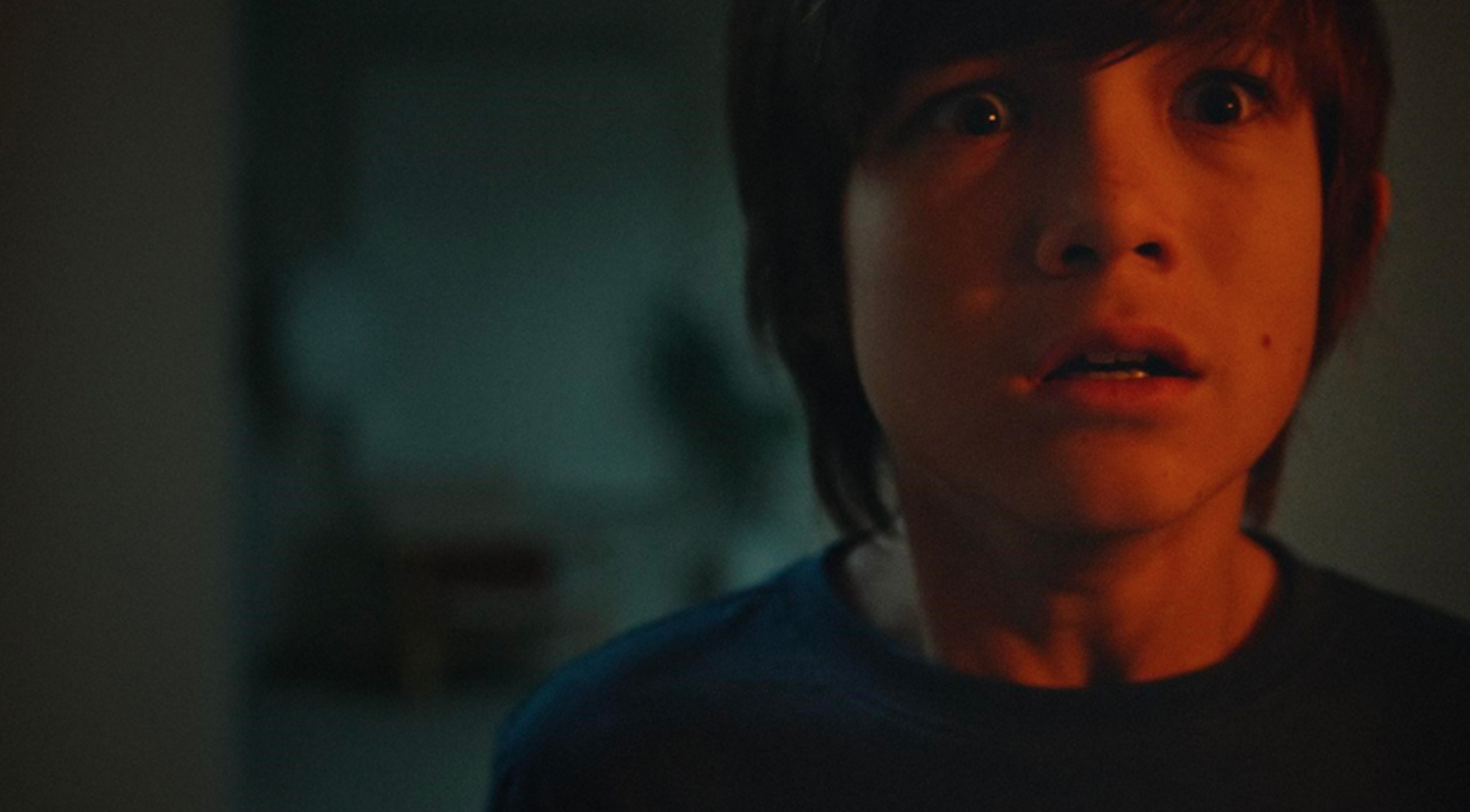The Djinn. // Courtesy of IFC Minuit
Horror is defined by occult artifacts and spells that prey on the weak or impressionable, tricking them into negotiating with evil forces bent on stealing their souls. The new movie The Djinn fits right into that pantheon, again pitting a young boy against a somber being in the late 80s. Tapping into familiar yet compelling ground, only a few minor incongruities prevent this status as a lean and extremely wicked movie favorite for the “Best Small Space Horror Film of the Year.”
Justin Powell and David Charbonier immerse their hero, 12-year-old Dylan (Ezra Dewey), in a nightmare of 1989. Dylan has moved into a new apartment with his father (Rob Brownstein) and is eager to explore his surroundings. Only one thing holds him back: he is mute. That, along with the large Y-shaped scar on his chest, indicates that Dylan has been through enough. Tack on a mother who sadly passed away and there’s enough clout to give the character steely resolve, while leaving him vulnerable to dark forces that might prey on his misfortune.
Stuck at home while his dad does a double shift on the radio, Dylan stumbles across a strange assemblage of antiques in his closet. Why no one bothered to throw the items away after the death of the former tenant is anyone’s guess. Among the items he finds a leather-bound spell book where an entry, the “Wish of Desire”, catches his eye. It seems like a pretty simple thing to talk about. A few drops of blood in a candle, an incantation in a mirror, and off you go. Except for the fine print about the Djinn (John Erickson), who, to fulfill your heart’s wish, will test your wits and sanity for an hour.
For all purposes, The Djinn is a haunted house movie that’s drastically reduced in square footage. With limited space to navigate, Powell & Charbonier are inventive with their scares. Dylan only has his wits to save him, but Djinn turns out to be a cunning and relentless demon. Every time Dylan seems to have the upper hand, the rug is pulled from under him, to the point of making the filmmakers seem a little too mean. In their second film together, Powell and Charbonier hone the techniques that worked for them in The boy behind the doorwhich also dealt with young boys fighting for their lives.
With repeated manipulative flashbacks that eventually test the audience’s patience, the film feels a tad too long, even at just 82 minutes. For most of the film, however, the filmmakers bend over backwards to make the most of the confined setting, finding different ways to build up the tension and the dread. Julian Estrada’s cinematography is understated, never flashy, but expertly executed to navigate the scenes. Many DPs would use quick pans to create a frantic fake feel, but Estrada regularly glides from room to room, letting the audience know precisely where he is. The approach transforms rudimentary jumps into real shocks.
The Djinn is a solid horror movie, despite the hurdle of pacing drops that happen a little too often. Perhaps the best way to see The Djinn is that it works perfectly as a horror gateway. For young viewers looking to scare themselves (and possibly dissuade them from opening mysterious books on the occult), it doesn’t get much better.

